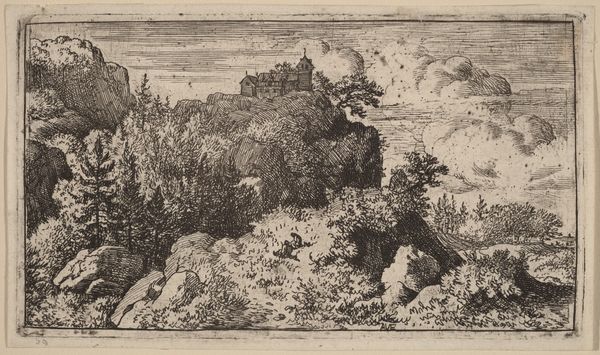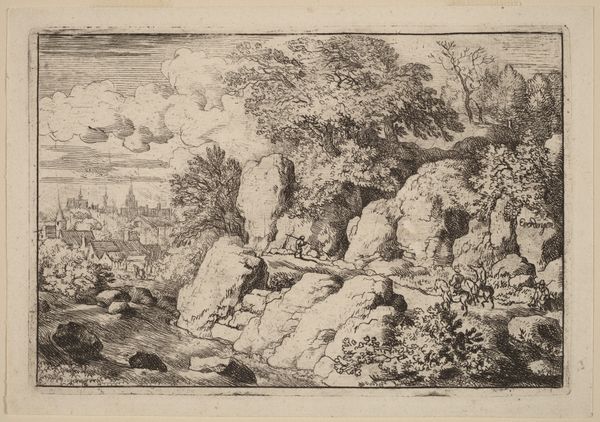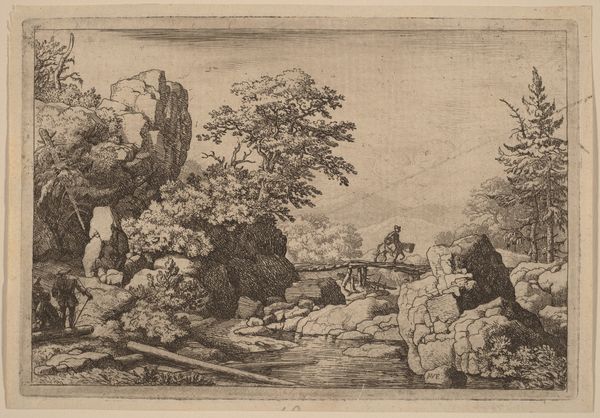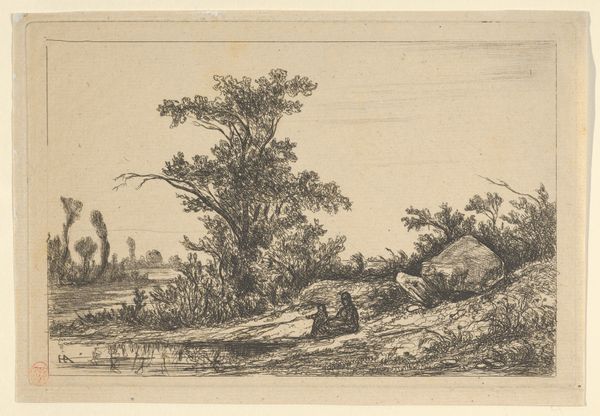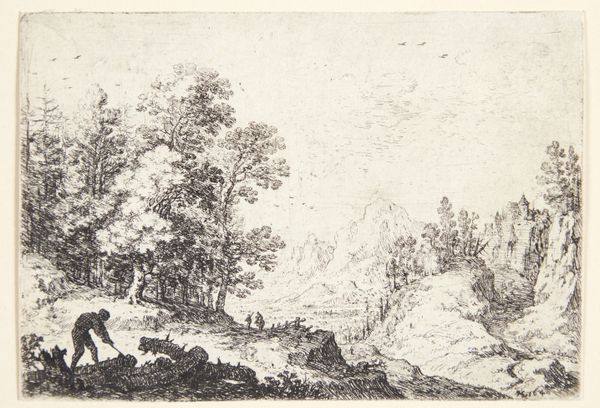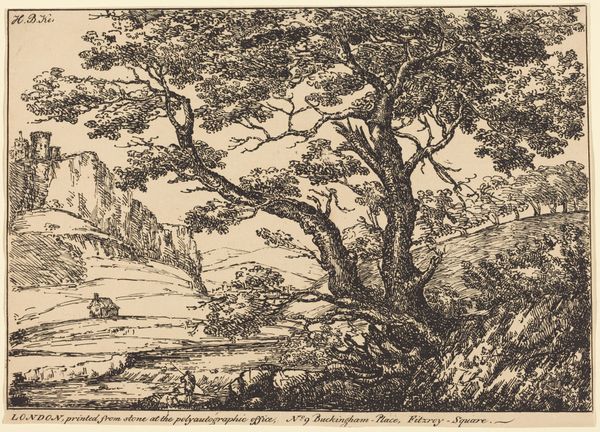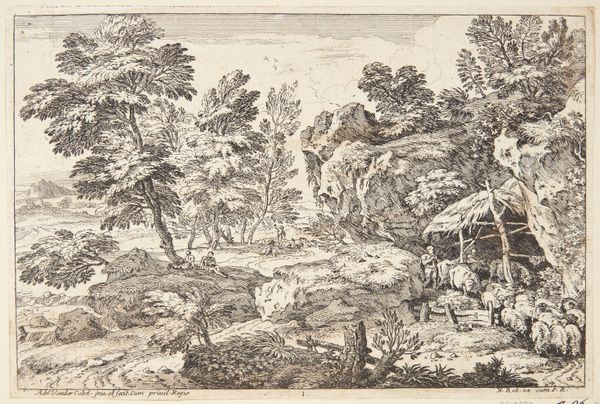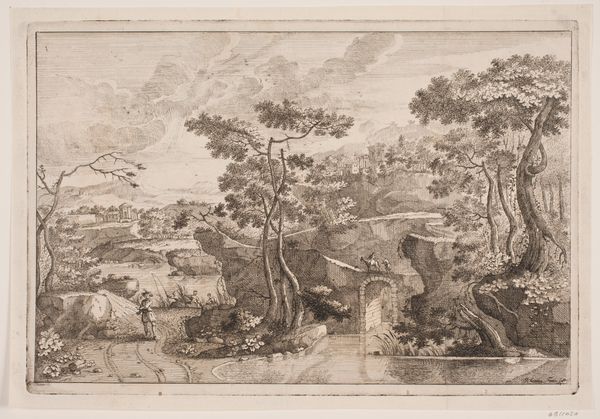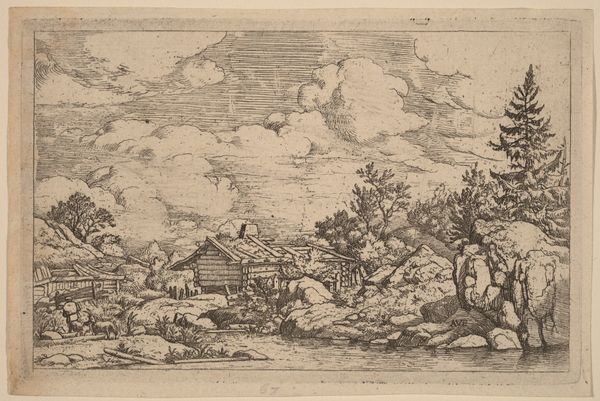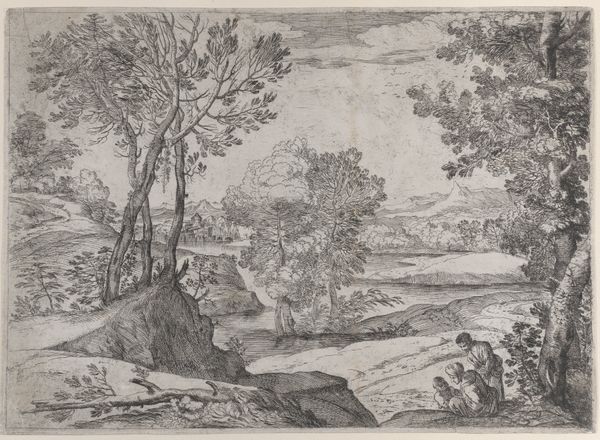
drawing, print, etching, ink
#
drawing
#
ink drawing
#
baroque
# print
#
etching
#
landscape
#
ink
Copyright: National Gallery of Art: CC0 1.0
Curator: Here we have "Two Logs in the Water," an etching by Allart van Everdingen dating from approximately 1645 to 1656. Editor: It’s a stark little print. The ink creates a sense of roughness that feels truthful to the northern landscape. What was Everdingen doing? A precursor to Land Art? Curator: Not quite! Everdingen actually travelled to Norway and Sweden. His trips abroad influenced his style, particularly his landscape etchings and paintings. We can consider his role in popularizing Scandinavian themes for a Dutch audience. It's less about disturbing or building upon the land like in the land art movement, but bringing foreign themes back to a Dutch consumer. Editor: Fascinating, I didn’t realize. It’s striking how he's positioned the human figure on the bridge between two jagged outcrops. To me, the scene evokes a fragile masculinity – a kind of lone hero navigating treacherous nature. What does this say about Dutch culture, then? Curator: I think you’re onto something with this navigation theme. These pieces played an essential role in framing Scandinavia as simultaneously dangerous and alluring for the upwardly mobile Dutchman. Notice also how he’s carrying an impossibly long stick over the river, almost like he is poling for control of his circumstances. We see it in paintings as well as his printmaking— the proliferation of Northern landscapes really fed an emerging commercial appetite for adventure. Editor: So art is participating in myth-making for cultural expansion, maybe even a form of economic and cultural justification. Considering it's an etching, which allowed for wide reproduction, this landscape speaks directly to the idea of exploration and extraction of foreign spaces as inherent to Dutch identity. Curator: Precisely. The rugged terrain also signaled something entirely different from the flat, cultivated Dutch landscape. Think about the print's market then—its social role of transporting its buyers, mentally at least, into uncharted territory, playing a part in expanding a social interest in trading. Editor: Well, now I can't look at it as just a harmless landscape anymore. All this from a couple of logs floating down a river, it changes the viewing completely! Curator: That's often the fascinating work we're privileged to undertake in art analysis: connecting objects and movements to their time.
Comments
No comments
Be the first to comment and join the conversation on the ultimate creative platform.
